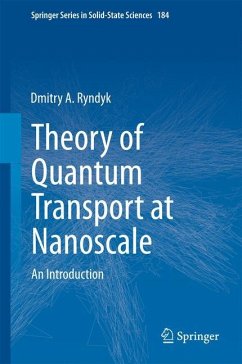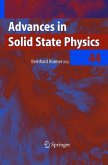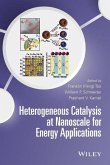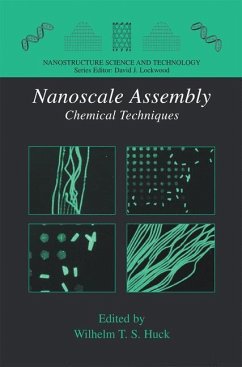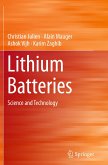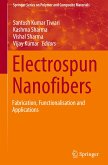This book is an introduction to a rapidly developing field of modern theoretical physics - the theory of quantum transport at nanoscale. The theoretical methods considered in the book are in the basis of our understanding of charge, spin and heat transport in nanostructures and nanostructured materials and are widely used in nanoelectronics, molecular electronics, spin-dependent electronics (spintronics) and bio-electronics. The book is based on lectures for graduate and post-graduate students at the University of Regensburg and the Technische Universität Dresden (TU Dresden).
The first part is devoted to the basic concepts of quantum transport: Landauer-Büttiker method and matrix Green function formalism for coherent transport, Tunneling (Transfer) Hamiltonian and master equation methods for tunneling, Coulomb blockade, vibrons and polarons.
The results in this part are obtained as possible without sophisticated techniques, such as nonequilibrium Green functions, which are considered in detail in the second part.
A general introduction into the nonequilibrium Green function theory is given.
The approach based on the equation-of-motion technique, as well as more sophisticated one based on the Dyson-Keldysh diagrammatic technique are presented. The main attention is paid to the theoretical methods able to describe the nonequilibrium (at finite voltage) electron transport through interacting nanosystems, specifically the correlation effects due to electron-electron and electron-vibron interactions.
The first part is devoted to the basic concepts of quantum transport: Landauer-Büttiker method and matrix Green function formalism for coherent transport, Tunneling (Transfer) Hamiltonian and master equation methods for tunneling, Coulomb blockade, vibrons and polarons.
The results in this part are obtained as possible without sophisticated techniques, such as nonequilibrium Green functions, which are considered in detail in the second part.
A general introduction into the nonequilibrium Green function theory is given.
The approach based on the equation-of-motion technique, as well as more sophisticated one based on the Dyson-Keldysh diagrammatic technique are presented. The main attention is paid to the theoretical methods able to describe the nonequilibrium (at finite voltage) electron transport through interacting nanosystems, specifically the correlation effects due to electron-electron and electron-vibron interactions.
"Professor Dmitry A. Ryndyk is an expert on quantum transport theory and has taught classes on this subject ... . This book has been developed from his course notes and is aimed at being a suitable advanced level textbook for master's- and PhD-level students ... . the book is useful for a graduate-level seminar class on nanoscale quantum transport and for self-study for experts working in this field. For those interested in nanoscale quantum transport, I recommend this book." (Steven C. Moss, MRS Bulletin, Vol. 42 (1), January, 2017)

